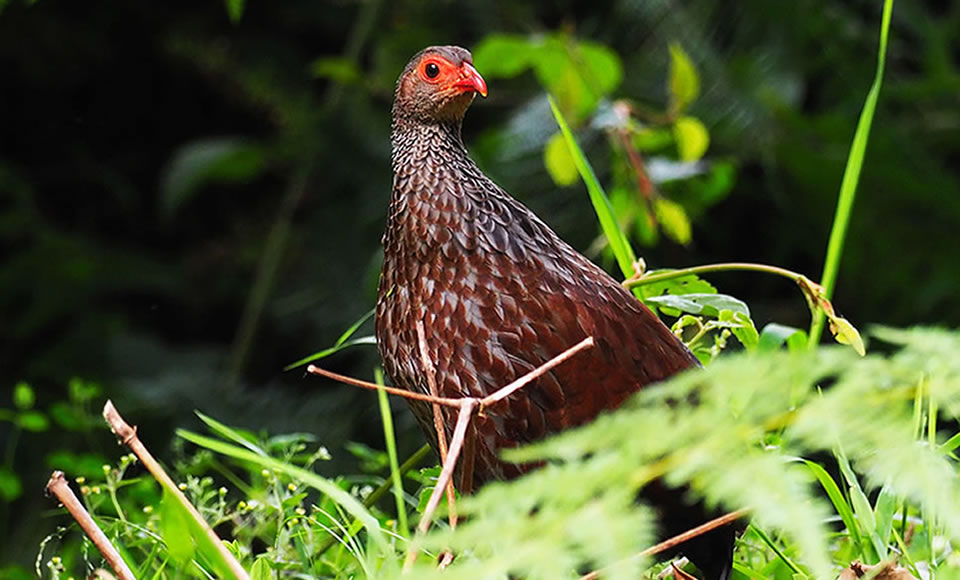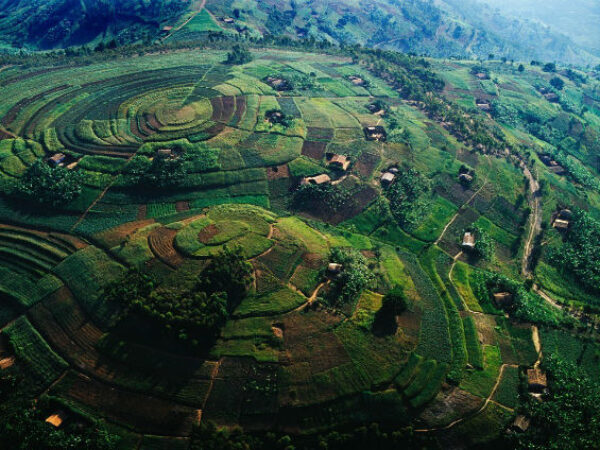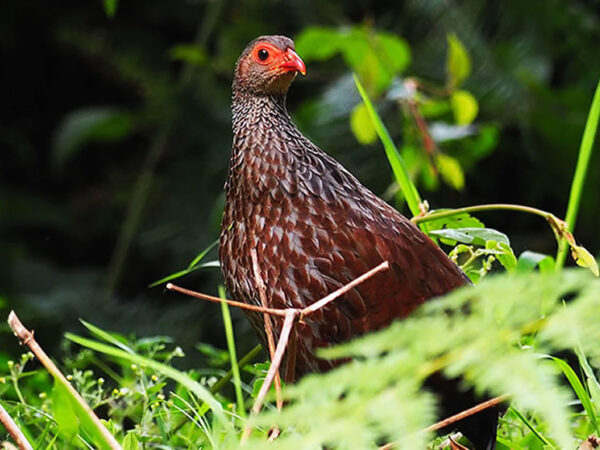
6 Best Places to Go Birding in Rwanda
Rwanda has one of the highest bird counts on the continent, rated in top five destinations in the world for those seeking a rewarding birding experience. Any serious Rwanda birding safaris should incorporate both the wetter and more mountainous western regions, the drier Savannah of the east, and then time in some of the many wetlands and marshes and species rich forests.
Rwanda has at least 692 residents, visitors and occasional visiting bird species. An additional 5 locally extinct and another 5 are to be confirmed. This brings the total to a maximum of 702 species and there are at least 27 birds known as Albertine Rift Endemics, a total higher than any country in Africa, other than the DRC.
Landlocked and lying just south of the Equator, Rwanda has a diverse topography that has been shaped by the dynamics of one of Africa’s primary geological features, the Great Rift Valley. Tumultuous subterranean forces have over the last 50 million years contorted, ruptured and seared the crust, giving rise to a hugely impressive array of volcanoes, lakes, mountain ranges and forests that define the landscapes of today. Collectively, they make up the narrower and shorter western branch of the rift valley, or, because Lake Albert is its first discernable feature, the Albertine Rift or Albertine Eco- region.
The Albertine Eco-region
Comprising a chain of mountains formed through upliftment and volcanic activity, the Albertine Eco- region stretches across six countries and id regarded as the centre of the Afromontane habitat. It also a belt of exceptional fauna and flora endemism: over 40 bird species, 34 mammals, 117 butterflies, 34 amphibians and 16 reptiles are to be found. It is no winder it’s the most celebrated destination of ecological importance.
Around Kigali
The Nyarutarama Lake, or Lover’s Lake bordering the Kigali Golf Course, is surrounded by a track which offers excellent nature walks and bird watching opportunities. The Nyabarongo Wetlands also offer walking paths and good bird watching. This protected area covers 142.62 sq. km with two Lakes- Lake Mirayi in the south and Lake Rumira in the north. The wetlands are fed by the Nyabarongo River, a tributary of the Nile, which empties into the Akagera River which, in turn, flows into Lake Victoria. The birds to spot include; Cardinal Woodpecker, African Grey Horn bill, African Rock Pigeon, Brown Throated Wattle-Eye, Rwenzori Turaco, Dusky Crimson-wing, Collared Apalis, Rwenzori Double-Collared Sunbird.
Volcanoes National Park
To the north lies the volcanoes National Park, this protects the Rwandan portion of the Virunga Mountains, a Tran’s frontier Conservation area that includes protected areas in Uganda and DRC. Forming a complex of mostly dormant volcanoes, it includes Rwanda’s highest point, Mount Karisimbi (4507m), and two active ones, Mount Nyiragongo and Mount Nyamulagira, while more famous for its mountain gorillas and other primates, volcanoes boasts almost 165 bird species, with 17 Endemic to the area. Some of the Birds include; Red-billed Fire Finch, Cinnamon-chested Bee-Eater, Dusky Fly-catcher, Chubb’s Cisticola.
Nyungwe National Park
The Nyungwe National Park is a Tropical mountain rain forest and one of Rwanda main protected areas, lies on south- western slopes of the highland region that forms the great divide between the Congo and Nile drainage systems. The park protects one of the region’s largest and oldest remaining patches of montane rain forest and is home to 310 species of birds.
The forest in Rwanda are increasingly being sought out for the incredible birding opportunities, particularly the numerous Albertine Raft endemics; 27 to be found in Nyungwe, the highest concentration found in any single park in Africa. Amongst them are the; Regal Sunbird, Red-collared Babbler, Rwenzori Turaco, Handsome Spurgoel, Rwenzori Batis, Grauer’s Swamp-Warbler, Blue-headed sunbird, possibly the rarest of all endemic birds would be the Albertine Owlet known only five records in the area.
The Akagera National Park
The Akagera National Park in the northeast still covers a sizeable chunk of Savannah. Mixes of rolling grassland interspersed with broad and acacia woodland, these lower- lying lands are dissected by the Akagera River. The sought after species here would be; Red-faced Barbet, Sousa’s shrike, and white- collared Olive back, amongst others. The park has a mosaic of wetland and lakes, along then course of the Akagera River and the eastern boundary. A midst the papyrus and reed beds some of the prized species to be found are; Caruthers’s Cisticola, Papyrus canary and more.
Wetlands and Marshes
Rwanda’s wetland and marshes, covering just over 10% of the country, include Rugezi, the fourth of the main protected areas, as well as two other locations, Akanyaru wetlands and Nyabarongo wetland, that have been declared important birding areas (IBA’s) by Birdlife International. If there’s still on the schedule, the keenest of birders can still head to a number forest reserves scattered around the country.

